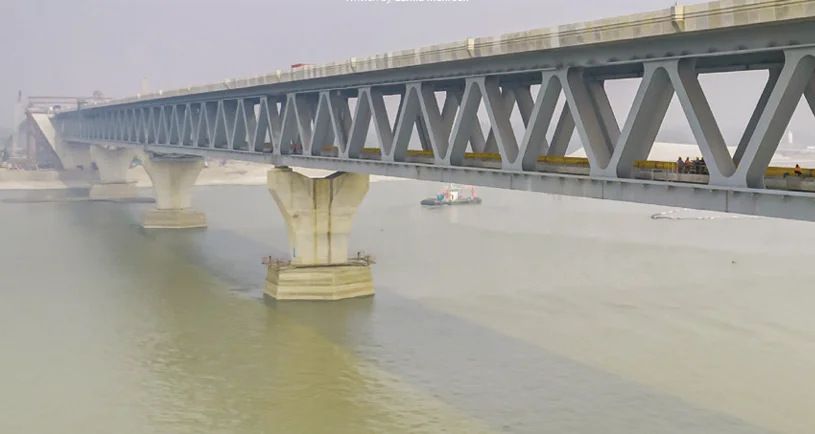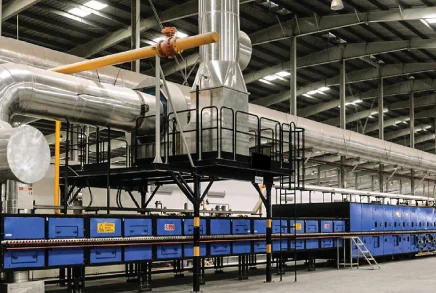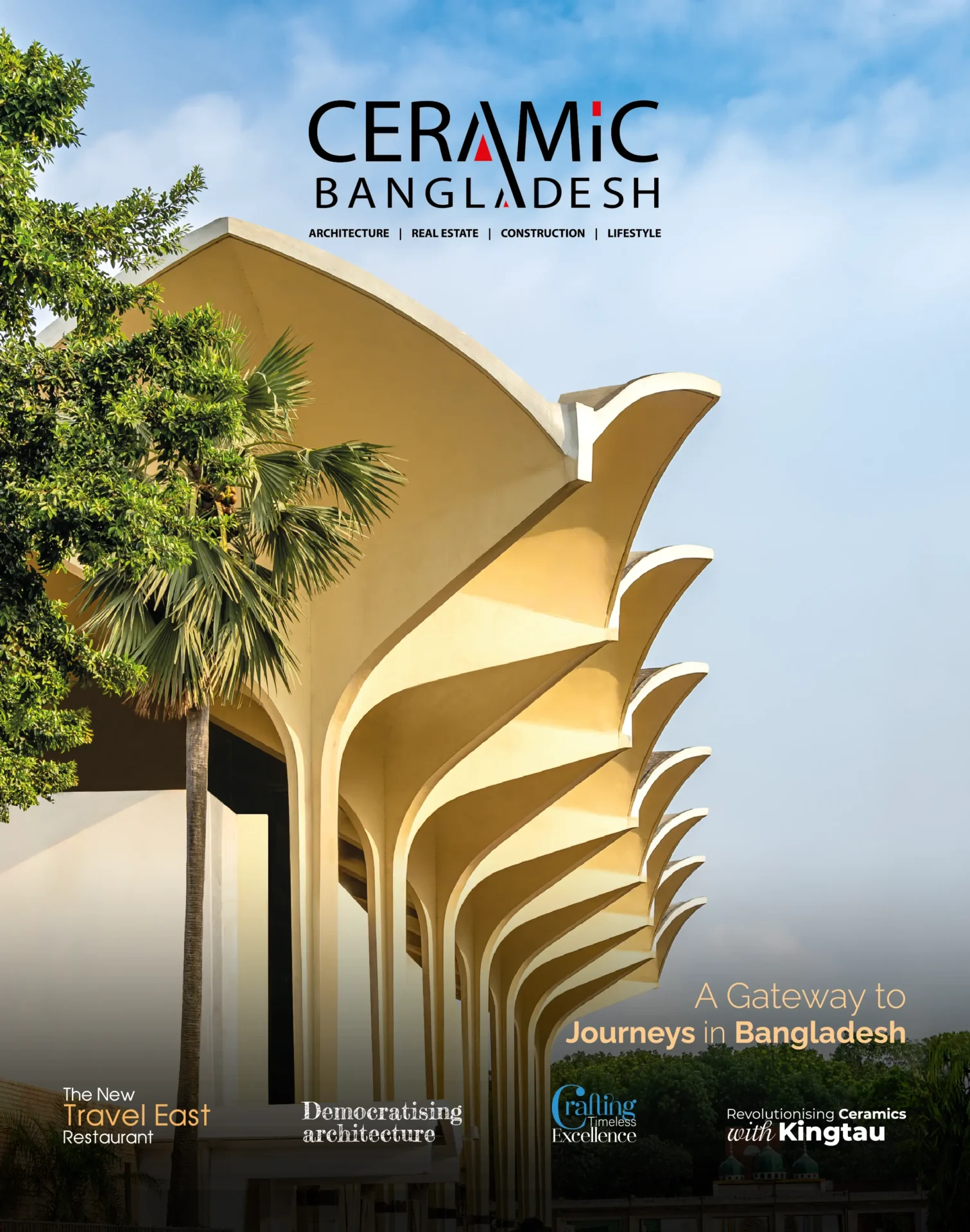
Bangladesh is at an unprecedented crossroads with power crisis and hyper inflation. At a time when major industries at home suffer an acute power crisis, aggravated by the the Russia-Ukraine war following the Covid-19 pandemic, the recent soft inauguration of the first unit of the 1,320-megawatt Maitree Super-Thermal Power Project, also known as Rampal Power Plant, is believed to have been a relief from the energy crisis. Amid the crisis globally, Bangladeshi stakeholders, especially those involved with the multi billion-dollar export industries, manufacturing sector and the financial sector, are now waiting wholeheartedly for commercial operation of the Rampal Power Plant soon to rid the nation of this power predicament.

Domestic energy experts and analysts alongside other stakeholders look optimistic with this project and they are of the opinion that the Rampal power project is economically feasible, sustainable and profitable. Terming it one of the cheapest power plants of its kind in the country, they strongly viewed that the plant will get going with the key objective of generating affordable electricity as a resilient and viable solution to the country’s power crisis.
Prime Minister Sheikh Hasina and her Indian counterpart Narendra Modi jointly inaugurated the first unit of the coal-fired super-thermal plant through video conferencing on September 6, 2022. The country’s largest power plant is sited on an area of more than 915 acres of land in Rampal upazilla in south-western Bagerhat district under Khulna division, some 272 kilometres away from the capital Dhaka. The high-efficiency, low-emission supercritical plant site sits 14 kilometres north of the world’s largest mangrove forest, the Sundarbans.
About the funders
The Rampal power project is a joint venture between India’s state-owned National Thermal Power Corporation (NTPC) Ltd and the state-owned Bangladesh Power Development Board (BPDB). The US$ 2.00 billion joint venture company is known as the Bangladesh-India Friendship Power Company Ltd. (BIFPCL) that builds, runs and operates this power facility. The BIFPCL has been co-promoted by the BPDB of Bangladesh and the NTPC Ltd of India with an equal (50:50) equity investment. According to Bangladesh’s power ministry, the joint venture company will enjoy a 15-year tax holiday. In March 2022, Bangladesh boasted the country’s access to 100 per cent electricity, but the national power grid system failed in July and power outage suddenly began to disturb the nation and the socio-economic activities. The Power Division disclosed that the largest amount of what is
technically called load-shedding per day stood at 2,000–2,200 MW during the July-September period. But this shortfall peaked in October, taking it to
2,500–3,000 MW.

The start of the project
BPDB and NTPC entered into a memorandum of understanding (MoU) instrument in 2010 to implementing this mega power plant project in Bagerhat’s Rampal upazilla that has seen an upturn in economic activities centring this power plant in recent years. An estimated 80 per cent of the project costs will be covered through a long-term loan from the EXIM Bank of India. As the construction of the facility was ongoing, the February 2021 was set as the first deadline for commissioning the power plant’s first unit while the second unit by August 2021, according to competent sources. However, the deadline was extended several times for a number of reasons, including emergence of the Covid-19 pandemic in 2020.
Use of coal and technology
A coal-fired plant produces electricity by burning coal in a boiler to produce steam. Then the steam, produced under tremendous pressure, flows into a turbine, which spins a generator to create electricity. The steam is then cooled, condensed back into water and returned to the boiler in order to start the process over. Supercritical combustion technology and sophisticated equipment are being used to lessen environmental hazards and thus make this project safe and eco-friendly. Some 6,500 cubic meters of water will be required per hour and minimum 10,000 tonnes of coal will be required to produce 1300 MW electricity every day. The ash content of this imported Indonesian coal is 8-10%. The height of chimney is 275 meters, equivalent to 90 storied building.

In its initial stages, there was a strong debate on the red-hot issue of installing this coal-fuelled thermal power facility near a forest and some termed it suicidal with apprehensions of environmental disaster for the forest, which is home to thousands of wild species, flora and fauna. Some environmentalists made a mass call for scrapping of the project. The government, however, showed its determination to go ahead with the project. State energy experts said the project would not be harmful as its supercritical technology will minimise ecological hazards. Eco-warriors demanded that environmental concerns must be given precedence over commercial interest. They called for doing an environmental impact assessment and feasibility study before embarking on the project that may have anthropogenic impacts on environment, including effects on biophysical environments, biodiversity and other resources, let alone emissions of carbon dioxide and other pollutants as well as particulates. The joint venture company has already planted 116,000 different kinds of trees around the project site while the Centre for Environmental and Geographic Information Services (CEGIS) is monitoring the parameters related to the environment of the Rampal site and its adjacent areas, including Khulna and the Sundarbans.
Employment opportunities
The Rampal power plant project has opened up a job generation opportunity for local people and those affected for construction of this project’s
infrastructure and during its operational period. As this region has long remained underdeveloped, opportunity of trade and employment was very limited. The power plant project has come as a relief to some extent. Alongside direct employment in the BIFPCL, there will be a huge opportunity to the locals for business and other indirect employment prospects. Moreover, this industry will usher in economic growth in Rampal in particular and the country in general, creating many downstream and/or related industries.
Supply chain
The supply chain of coal in all coal-fired power plants, including the Rampal power plant, is the biggest challenge. Technically unique in the plant is the
supply chain issue. The Rampal plant sits close to the river Pashur. Regarding the supply chain of the plant, the mother vessel will be anchored in deep sea carrying 50,000 tonnes or 100,000 tonnes in line with the plan. From the deep sea, covered lighterage vessels in each trip will bring 10,000 tonnes and they will load and unload every time. The vessels would be covered so that dust cannot come out. That is the unique challenge. The energy expert also suggested focusing on coal-based power production and renewable energy to meet energy demand.
Utilisation rate
Unlike most of the facilities of the country’s power fleet does, the Rampal coal-fuelled power plant will unlikely sit idle most of the time if regular and
long-term sources are ensured through a smooth supply chain.

What experts say about Rampal plant?
Dr M Tamim, a professor of Petroleum and Mineral Resources Engineering (PMRE) at the Bangladesh University of Engineering and Technology (BUET), is one of the prominent energy experts and also a former special assistant to the chief adviser of a caretaker government, gives his insights about the
Rampal power project and the future of coal-based power plants amid the acute power crisis, in an interview with ‘Ceramic Bangladesh’.
“Rampal coal plant will be a very viable solution to Bangladesh’s power predicament if Bangladesh can ensure the supply-chain management of coal,” hopes Dr. Tamim. “Rampal plant will meet the country’s power shortages to some extent through generation of 1,300 megawatt electricity.” Because of the supercritical technology, the pollution of air, water and ecology in the vicinity of the plant will be much lower than traditional coal plants. The government claims that there would be no adverse effect on it. This is a Bangladesh-India joint-venture project. The Indian company BHEL is supplying machineries and installing the power plants which are two units that will produce a total of 1,320 megawatt electricity, according to Dr. Tamim.
Low-cost electricity
Coal-based power plants can produce low-cost electricity than imported oil and gas-based power plants. Regarding production cost and power tariff,
Dr Tamim said Bangladesh could have got relief to some extent if it could build the plant much earlier and before the Ukraine-Russia war. Ensuring primary energy in the power sector is a must to mitigate the current crisis, he said. Reducing imported fuel can reduce vulnerabilities, Dr Tamim added, suggesting that the government should explore and exploit the existing gas reservoirs to tackle the current power crisis.
“All the five coal-fired power plants are running on imported coal. Rising imported coal also makes the country vulnerable. The development of our
own coal bank is very important amidst this recurring crisis,” the energy expert pointed out.
Resolving power crisis
BIFPCL managing director (MD) Engineer Sayeed Akram Ullah, talking to ‘Ceramic Bangladesh’, gave the latest development in the Rampal project.
As the commercial operation of the first unit of the facility begins by December this year, the existing electricity crisis will be addressed substantially, he said. Almost 100 per cent power to be generated from this plant would be supplied to two different transmission lines—one from Rampal to Khulna and another from Rampal via Gopalganj to Aminbazar of Dhaka. The trial power production has reached 350 MW at this moment and it is being transmitted from this plant through 230 kilovolt (kV) double circuit line to Khulna, according to Mr Akram Ullah. The 400 kV double circuit transmission line from
Rampal via Gopalganj to Aminbazar is getting readied for supply, the BIFPCL MD said, that the transmission line might be up and running by this December. He expects that the second unit will start running in April 2023. Three jetties will be able to unload 5,000 tonnes of coal in four hours, which
is the amount of coal the two units will require each day to produce 1,320 MW
of electricity, Mr Akram Ullah mentioned. Asked about construction of the plant’s three jetties, he said the construction of one jetty has already been
completed.

CSR activity
At least 62,000 people living in the areas were given different sorts of medical treatment under its CSR (corporate social responsibility)
activities. The BIFPCL will take many social welfare activities and programmes for the local people and community. Good news is the company has already taken up several CSR-related programmes like free medical facility to local people. It has made an initiative to recognise and encourage local meritorious students. Vocational training for local women for empowerment and computer training for local youth for employability have been taken as part of the CSR initiative. Moreover, the government has already announced to set up a Social Welfare Fund for the benefit of local people by way of imposing tax/levy at 3.0 paisa per unit of power generation from the plant. This is expected to create a kitty with annual fund injection of the order of approximately Taka 30 crore (Tk 300 million). The BIFPCL will take up different social welfare activities for the local people from this fund in consultation with the government. The company is committed to providing reliable, environment-friendly and affordable power to the people of Bangladesh.
Coal transport and use of Ash Coal
Transportation will be done through the environment-friendly modern covered vessels. So, the air quality of the Sundarbans reserve forest will not be affected. There is a huge scope for utilising ash in an environment-friendly way, especially in the cement manufacturing, brick manufacturing and construction industries. At present, cement companies import ash from nearby countries. Local brick fields use soil for brick manufacturing. Supplying ash to these industries will not only ensure large-scale utilisation of ash in Bangladesh, it will also help the country’s economy in multiple ways. The market survey supports the fact that 100 per cent ash generated in the project will easily be consumed in the cement industry at home. Earlier, the BIFPCL floated an expression of interest (EoI) from cement industries in this regard for more than four times of estimated ash production from the 1,320-MW (2×660 MW) Maitree Super Thermal Power Plant.
8,000 coal-fired plants worldwide generate 40% of global electricity
Power Secretary Mohammad Habibur Rahman told Ceramic Bangladesh that most of the countries in the world are still mostly dependent on coal as the primary fuel source for electricity generation– in fact, 40% of the world’s average electricity generation comes from coal plant. This is because coal power is the cheapest. Moreover, today’s technology for power generation is much better than the coal technology of the 1970s and is much less harmful to the environment. About 67% of China’s electricity, 60% of US and 63% of India’s electricity come from coal. History shows the more carbon emitted countries are, the more they are developed. While USA’s per capita carbon emissions are 30 tons, China’s 15 tons and India’s 8 tons, but Bangladesh’s only 0.03 tons. So Bangladesh still has a long way to go in coal power generation. Today coal is 70% cleaner than it was in the 1970s. Modern technology can remove up to 90% pollution from coal combustion. It is no wonder that about 8,000 coal-fired power plants across the globe
generate 40% of global electricity. The Secretary said that according to Bangladesh’s Power System Master Plan-2010, 50% of the 40,000 megawatt
electricity production target by 2030 should come from coal. For this, a total of 23 coal-fired power plants were approved in the public-private sector. But recently the government has decided to close 10 of them. As a result, 13 are coming in production. Rampal is one of them. From here, each unit of electricity will be available at Taka 6. Currently 1320-MW Payra Coal Power Plant is in production. The 525-MW Barapukuria Coal Power Plant is operational. The 1200-MW Matarbari Coal Power Plant, the 1200-MW Banshkhali SS Coal Power Plant and the 700-MW Orion Power Plant will come into
production by 2024. Besides, the 1600-MW of coal power will be imported from India’s Adani Group.







